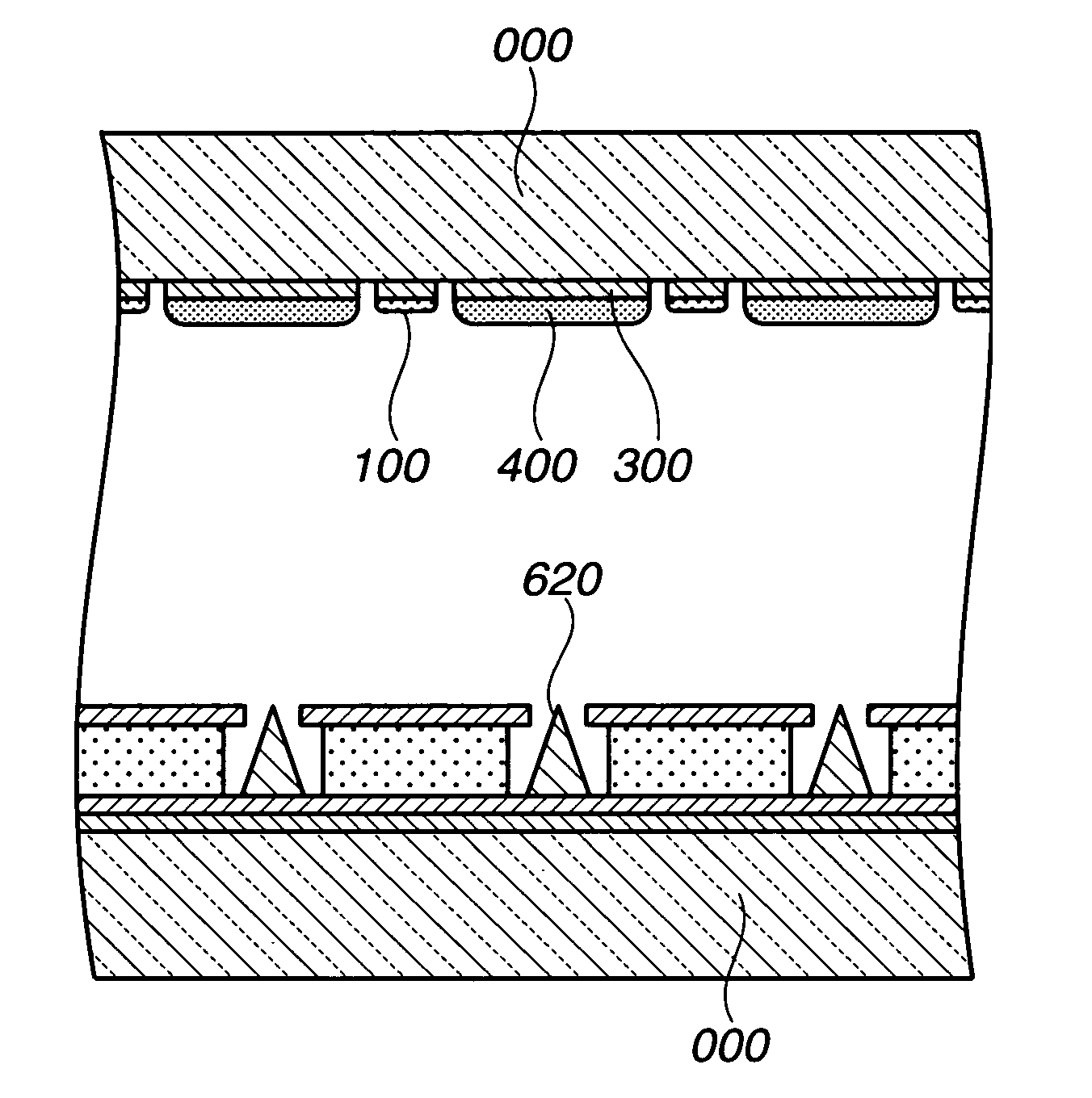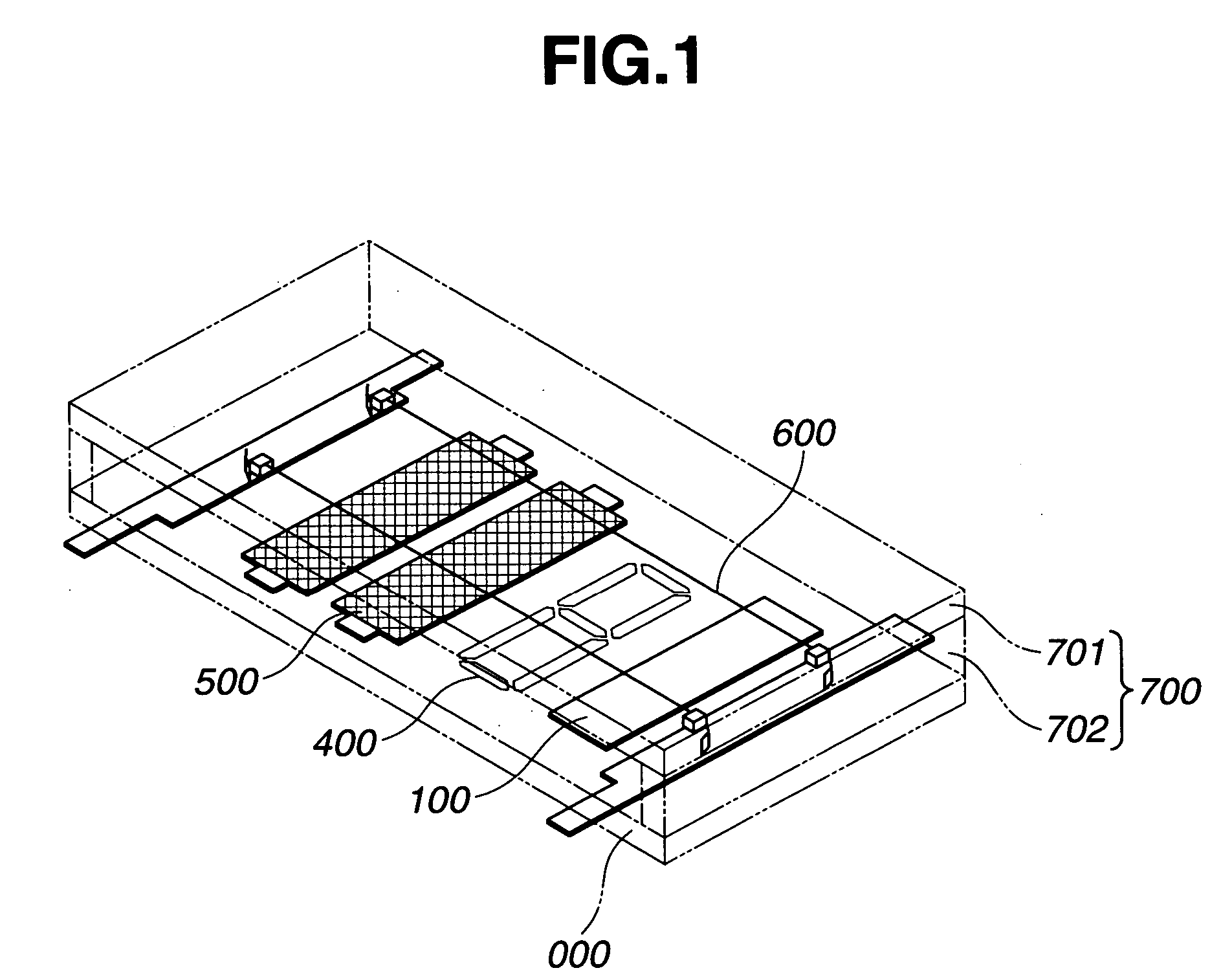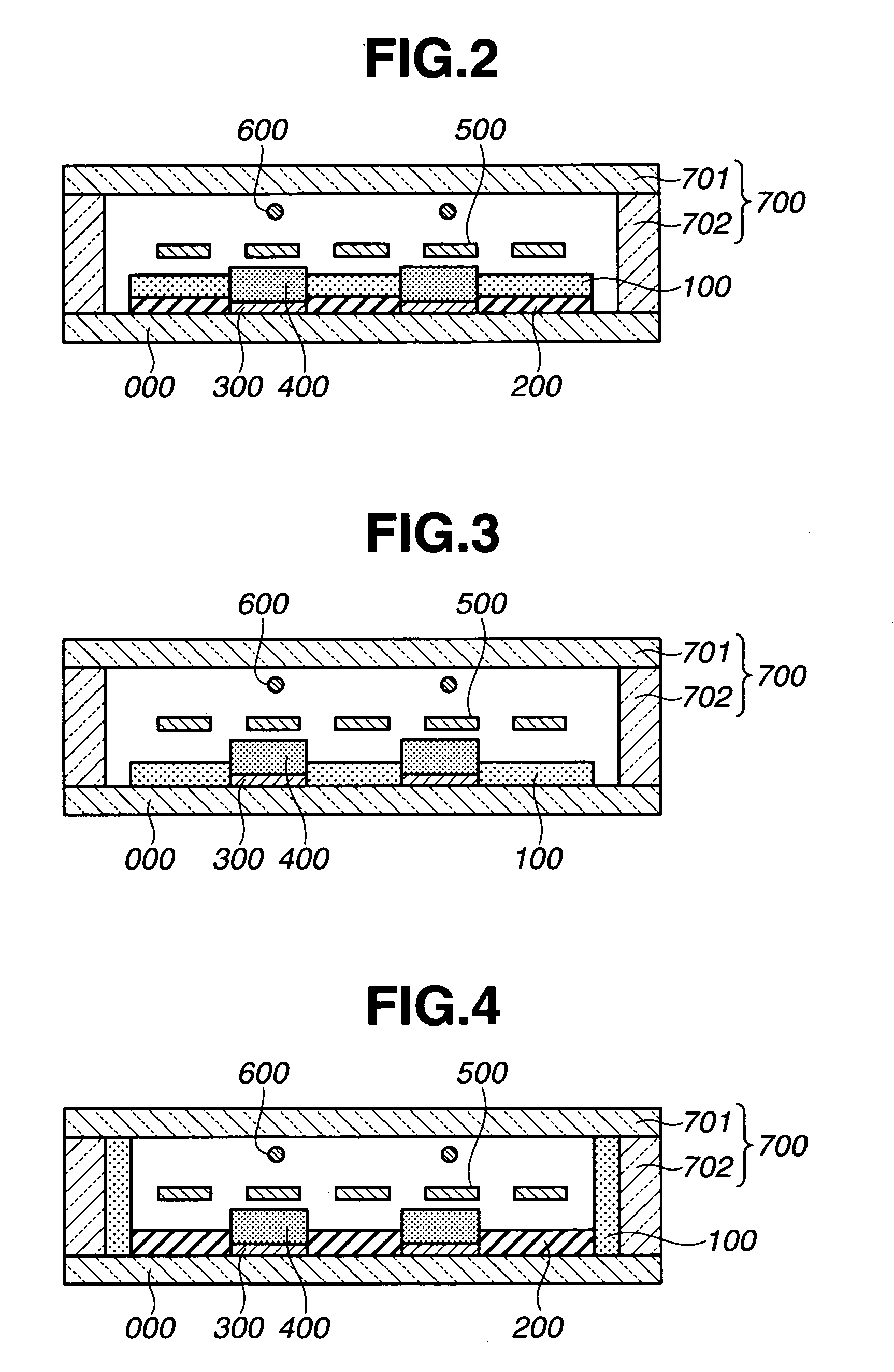Self-luminous elements and method for producing the same
a technology of self-luminous elements and luminous elements, which is applied in the direction of vacuum obtaining/maintenance, tubes with screens, discharge tubes luminescnet screens, etc., can solve the problems of high cost of above-mentioned getter rings, affecting the operation life of devices, and requiring labor for mounting getter rings
- Summary
- Abstract
- Description
- Claims
- Application Information
AI Technical Summary
Benefits of technology
Problems solved by technology
Method used
Image
Examples
embodiment 1
[0083] In the embodiment 1, FIG. 1 shows a fluorescent display tube of the present invention in which a gas occlusion material containing zircnium dioxide is disposed as a gas occlusion layer on the upper surface of the anode substrate in a fluorescent display tube.
[0084] As shown in FIG. 1, an aluminum thin film is formed on the upper surface of the glass substrate 000 of 25 mm in width×50 mm in length. Then, the aluminum thin film is patterned through the photolithographic process to form a wiring pattern (not shown). An insulating conductor 400 containing a low melting point glass as a main component, which has through holes for connecting the wiring pattern to the anode conductor 400, is formed on the upper surface of the wiring pattern. An anode conductor 300 containing graphite as a main component is formed and baked on the upper surface of the insulating layer (if necessary, conductive materials may be disposed in the through holes).
[0085] Thereafter, a fluorescent substanc...
embodiment 2
[0119]FIG. 2 shows a gas occlusion material disposed on the upper surface of an insulating layer containing a low melting point glass as a main component. Referring to FIG. 2, anodes 300 of an aluminum thin film are formed on the upper surface of the glass substrate 000. An insulating layer 200 containing a low melting point glass as a main component is formed on the upper surface of the anode and has openings in a display pattern. Each fluorescent substance layer 400 is formed on the upper surface of the anode. Using the screen printing process, a paste of zirconium dioxide used in the embodiment 1 is coated on the upper surface of the insulating layer 200 disposed around the fluorescent substance layers and in areas lacking fluorescent substance layers. Thus, the gas absorption layer 100 acting as a gas occlusion material is formed. Thereafter, a fluorescent display tube similar to that in the embodiment 1 was fabricated.
[0120] In the embodiment 2, the gas occlusion layer is disp...
embodiment 3
[0121]FIG. 3 shows a gas occlusion material, in place of an insulating layer containing a low melting point glass as a main component. Referring to FIG. 3, anodes 300 of an aluminum film are formed in a display pattern on the upper surface of the glass substrate 000. A fluorescent substance layer 400 is formed on the upper surface of each anode. Using the screen printing process, a paste of zirconium dioxide used in the embodiment 1 is coated at a portion, lacking anodes having openings in a display pattern, and on the upper surface of the insulating glass substrate. Thus, a gas occlusion layer 100 acting as a gas occlusion material is formed. Thereafter, a fluorescent display tube similar to that in the embodiment 1 was fabricated.
[0122] In the embodiment 3, the fluorescent display tube in the embodiment 2, which does not use the Ba-Al getter, and which is disposed such that the surface of the gas occlusion layer is exposed in a vacuum atmosphere, showed an effect similar to that ...
PUM
 Login to View More
Login to View More Abstract
Description
Claims
Application Information
 Login to View More
Login to View More - R&D
- Intellectual Property
- Life Sciences
- Materials
- Tech Scout
- Unparalleled Data Quality
- Higher Quality Content
- 60% Fewer Hallucinations
Browse by: Latest US Patents, China's latest patents, Technical Efficacy Thesaurus, Application Domain, Technology Topic, Popular Technical Reports.
© 2025 PatSnap. All rights reserved.Legal|Privacy policy|Modern Slavery Act Transparency Statement|Sitemap|About US| Contact US: help@patsnap.com



